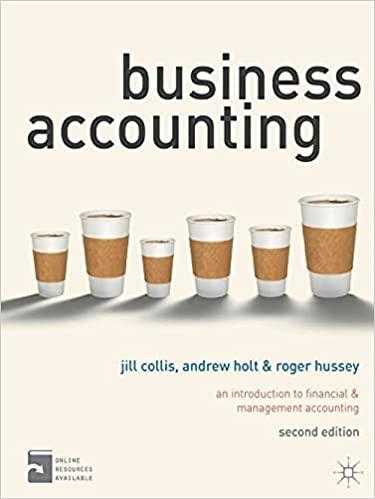Question
Context: There are two products (product A and product B) available on the market that serve a similar function and are almost substitutes. Product A
Context: There are two products (product A and product B) available on the market that serve a similar function and are almost substitutes.
Product A is manufactured by a lot of companies that compete with each other. The current demand for product A is given by a demand function of the form: P = 7 Q, where P is price and Q is quantity.
Product B is manufactured by a monopolist. The monopolist for product B has a loyal fan base, and its customers are less price sensitive as they love the brand. The demand for product B is of the form P = 14 2Q.
There is an existing technology which allows producing one unit of A for a cost of 5 (c=5).
A patented invention optimizes the production process and lowers the cost of production to 2 (c=2).
Question 1a Willingness to pay for a firm in competition selling product A:
Currently, there are many firms in the market selling product A. All firms have access to the existing production technology with c=5.
The patent protecting the innovation is up for sale. Obtaining the new technology (c=2) would allow a company to become a monopolist for product A and thus render all other companies non-competitive. It does not attract any buyers of product B, however. How much would a company in this situation pay to obtain the innovation?
Question 1b Willingness to pay for the monopolist of product B:
The monopolist selling product B is also using the old production technology and produces one unit of product B at cost c=5.
How much would the monopolist for product B be willing to pay for the patent, allowing it to produce at a lower cost of c=2? (Remember, the demand for product B is P = 14 2 Q).
Question 1c Comparison:
Please compare your results to Questions 4a and 4b who has a higher willingness to pay for the patent that allow using the new production technology? A company that could become a monopolist in the market for product A or the existing monopolist in the market for product B?
How does this finding compare to Arrows (1962) replacement effect? Your answer should contain a brief explanation of what Arrow has been calling the replacement effect when it comes to the incentives to innovate. Why, or why not, can you replicate the replacement effect in the setting of this question?
Step by Step Solution
There are 3 Steps involved in it
Step: 1

Get Instant Access to Expert-Tailored Solutions
See step-by-step solutions with expert insights and AI powered tools for academic success
Step: 2

Step: 3

Ace Your Homework with AI
Get the answers you need in no time with our AI-driven, step-by-step assistance
Get Started


